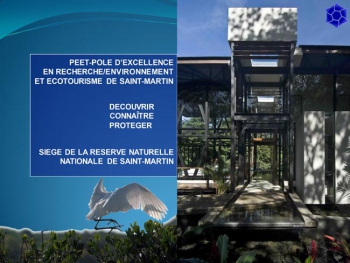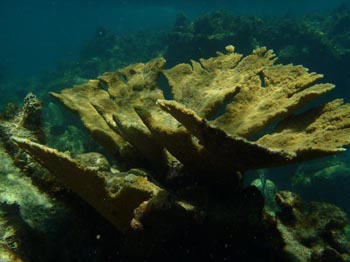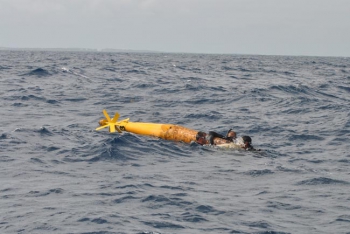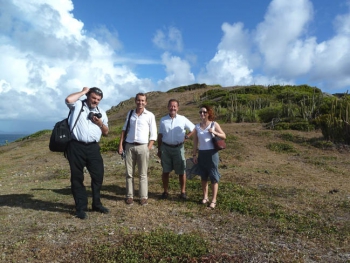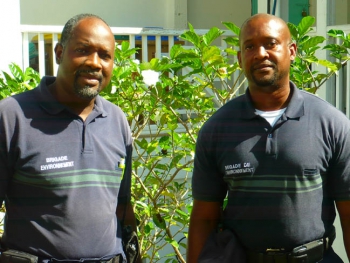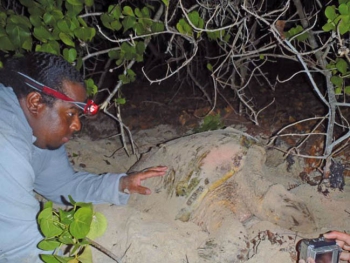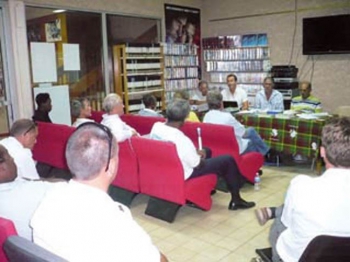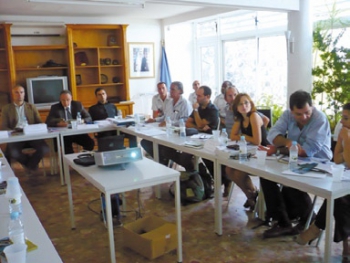Since hurricane Irma, life at the Réserve returned a little more to normal on November 22 with the participation of Nicolas Maslach and Franck Roncuzzi at the “Copolen,” the steering committee for the environmental police, in Guadeloupe. Organized at the request of the prosecutor’s office in Basse-Terre, the goal of this meeting was to put an operational strategy in place to control the zones protected by the environmental code. The four themes discussed by the committee were wastewater systems, urbanism, protected zones, and pollution. Director of the Réserve de Saint-Martin, Nicolas Maslach, and Franck Roncuzzi director of the office for development, surveillance, and the environmental police, worked with the public prosecutors in Basse-Terre, a jurist, and the director of Environmental Affairs (DEAL), as well as representatives of the gendarmerie, the Conservatoire du Littoral, the National Office for Hunting and Wildlife, the National Forestry Office, the French Biodiversity Agency, and the Réserve of Saint Barthélemy.
Better Means For Better Missions
Better Means For Better Missions
Better Means For Better Missions
Romain Renoux, who started at the Réserve Naturelle in 2010, is leaving Saint Martin behind for Monaco, where he will soon be in charge of the funds dedicated to the protected marine areas (AMP) of the Mediterranean, as well as putting into place the mechanism to attribute subventions to these AMP. His experience working with the European BEST project, which has a similar objective, and for which he was responsible for the Caribbean hub, will be very useful. Also the correspondent for the Agoa sanctuary in Saint Martin, he is pleased that the coordinated efforts led by Saint Martin are recognized by all of the partners on the role that the island plays as the regional hub in terms of protection of the oceans and seas. On the eve of his departure, he thought fondly of the highpoints of his experience in Saint Martin, such as the first partnership agreement signed with an academic institution —the middle school in Quartier d’Orléans— in 2010; the creation of the discovery path at the Etang de la Barrière in collaboration with the Conservatoire du Littoral; the identification of 818 marine species during a scientific mission in April 2012; and especially the promotion of the regional cooperation that took him throughout the Caribbean basin. “We must remain vigilant on a daily basis for the preservation of the natural heritage of Saint Martin, and maintain our capacity to react against any threats to the environment,” he told us before leaving.
300 people participated in the annual conference for French Nature Reserves (RNF) that was held on May 29-June 2 in Schoelcher, Martinique. Nicolas Maslach, director of the Réserve Naturelle de Saint-Martin was present, accompanied by Julien Chalifour, scientific director, and Franck Roncuzzi, head of the Nature Police. This large assembly of nature reserves in France is the time for the annual election of the board and the creation of various commissions. Franck Roncuzzi will participate on the police commission and Julien Chalifour on the scientific commission. Maslach will join them both on the overseas commission, which celebrated its 10th anniversary. The conference also provided the occasion for the Réserve Naturelle de Saint-Martin to exchange ideas with their colleagues from France, discuss common problems, as well as projects underway or on the drawing board, where the issues go beyond the local level.
The overseas commission debated the overall role of its jurisdiction and was particularly interested in the compensatory measures a reserve could exact against a developer that causes negative environmental impact. The commission also discussed the type of compensation possible and how to best use such monies for the general benefit of natural sites. A final atelier included all of the reserves in order to examine their management status: until recently, 60% were association-run. Today that figure is just 40%.
Théo Tondu, né à Saint-Martin il y a 20 ans, a été accueilli à la Réserve naturelle pour un mois de stage, entre février et mars 2017.
Étudiant en métropole, il prépare un BTS pêche et gestion de l’environnement marin et a enrichi ses connaissances en travaillant avec le pôle scientifique de la Réserve naturelle, mais aussi en participant sur le terrain aux patrouilles avec les gardes. Sa mission principale a consisté à affiner la cartographie existante des différentes espèces de cactus dans la Réserve, notamment à Tintamare.
Nouvelle arrivée sur l’île, Jade Quéré est titulaire d’un Master 2 en communication des organisations.
Spontanément, elle a proposé à la Réserve naturelle de travailler bénévolement avec l’équipe en place afin d’améliorer la communication à l’égard des institutions et du grand public. Merci Jade!
It was in Cayenne, French Guyana, that the council of French Shores in the Americas (CRFA) met on June 16 and 17, 2016.
All of the American branches of the Conservatoire were there, as well as concerned politicians, such as senator Guillaume Arnell, who represented Saint Martin. Each branch presented its current activities in terms of real estate, management, and improvements. A five-year plan was presented for Saint Martin and Saint Barthélemy. Another important step: the creation of a management committee for the sites of the Conservatoire du Littoral in Saint Martin. This committee will meet annually and will comprise representatives of the Conservatoire and the Réserve Naturelle, of course, as well as the Collectivité, the Prefecture, and DEAL, as well as members invited from time to time according to the subjects on the agenda.
Police training in Martinique
Julien Chalifour, director of the scientific sector, and ranger Christophe Joe,
took a Nature Police training course in Schoelcher, Martinique, on June 6- 24, 2016. The ATEN, an organization for the training of managers of natural sites, financed this initial obligatory program, which is considered indispensable to acquire the technical knowledge necessary to be sworn in and given certain powers assigned to the Nature Police.
What’s new in Pinel ?
The two restaurants and the boutique on the islet of Pinel have renewed their temporary certificates of occupancy, as accorded to them by the Conservatoire du Littoral since 2007.
An audit should be undertaken by the management of the restaurants in order to report on the energy consumption needed for the operation of these two places. This audit will serve as a basis for the installation of alternative energies, more in keeping with environmental protection than the generators still in use. The good news: the public beach zone with soon be indicated with ropes, and public toilets are under construction.
The first management meeting specifically dedicated to the sites owned by the Conservatoire du Littoral in Saint Martin was held on November 15, 2016 at the prefecture, with prefect Anne Laubies, senator Guillaume Arnell, and overseas delegate for the Conservatoire, Alain Brondeau, all in attendance.
A final report for 2016 was presented at the meeting, as well as a list of projects for 2017. Among the presentations by the participants, one problem brought up was the loss of water depth in the salt ponds, yet the removal of silt was one of the recommendations in the study made about the ponds in 2011. Guillaume Arnell is favorable to co-management of the ponds by the Conservatoire, the Réserve, and the Collectivité, which would like to be more associated with the rich natural heritage on the island. This option was favorably approved. At the same time, the committee also approved co-management for the Galion site to be shared between the Réserve Naturelle and the Collectivité.
Welcome Julie Walker to Saint Martin !
In early January, the new representative for the Conservatoire du Littoral in Saint Martin and Saint Barthélemy enthusiastically took on the torch passed to her by Olivier Raynaud, who became the director of Territorial Environmental Agency in Saint Barth. A jurist specializing in environmental law, Walker comes from the Conservatory for Natural Spaces in Aquitaine, where she was responsible for the department of Gironde, where her principal missions consisted of advancing knowledge, protection, management, and promotion of natural spaces.
The Réserve’s team of three wardens has been reinforced with the arrival of 20 yearold Ashley Daniel, hired under a program for young workers on July 1, 2015, with a renewable contract. Ashley applied to work at the Réserve Naturelle after getting her high school diploma, since she likes working with animals, with nature, and in the outdoors. “I enjoy being part of the staff at the Réserve, and the way everyone works together is really great. I have learned a lot of new things, such as patrolling at sea, and I adore navigation,” she tells us. We hope that Ashley continues to deepen her knowledge through her future experiences and training.
On June 25 and 26, 2015, the top managers of protected marine zones in the French Antilles met at the Hotel Mercure with one goal in mind: to keep moving forward in the right direction. The Réserve Naturelle of Saint Martin was represented in force, along with the Conservatoire du Littoral, the Environmental Agency of Saint Barth, the Parc National de Guadeloupe, the AGOA sanctuary, and the Environmental Agencies (DEAL) from Martinique and Guadeloupe. The goal of this regional forum, derived from a similar national forum, was to get all of the major players in this sector in contact so that they can share their experiences and their knowledge, and pool their information for the best means of conservation. Approximately 20 subjects were on the agenda, including the new law on biodiversity intended to avoid, reduce, and compensate for damage done to nature, with an accent on the Caribbean. For example, this new notion of «compensation» can be seen in the project for a large maritime port in Guadeloupe, which includes measures of restoration such as the transfer of coral colonies threatened by the new access channel. A presentation was also made about the creation of a network that would keep track of the health of the protected marine zones in the Northern Islands - Saint Martin, Sint Maarten, Saint Barth, Anguilla, Saba, and Saint Eustache - in order to improve results, and coordinate and simplify the work of the managers who are all confronting the same issues in an isolated manner. Also on the agenda was the topic of the usage - or the over-usage - of protected marine zones by the public. This atelier look to establish optimal specifications taking into account the delicate balance between the capacity of these sites in terms of visitors, maintaining activities that feed the economy, and the conservation of the eco-systems.
The Conservatoire, which owns two pieces of land
that are needed by the Collectivity for the construction of the new Quartier d’Orléans water treatment plant (STEP), has proposed exchanging part of this land for a natural site located along the banks of the Etang de la Barrière in Cul-de-Sac, that belongs to the Collectivity. The exchange is a win-win proposition: the future STEP, designed to treat the wastewater of 18,000 residents, needs the largest possible tract of land; and the Conservatoire would be able to have jurisdiction for the banks of the pond. This solution, while totally logical, is not possible today at any of the salt ponds, as the property of the Conservatoire is limited to the waters of the 14 ponds they manage.
Most of the sites under the aegis of the Conservatoire du Littoral are clear of any commercial activity, but Saint Martin is the exception to the rule, in the sense that certain structures were already there when the land was attributed to the Conservatoire by the government. Pinel is a prime example. The continued use of these sites was agreed to by the Conservatoire, by way of temporary occupation agreements (AOT), for two restaurants and a boutique, which have agreed to respect the demands of the requirements of the Conservatoire in terms of protecting their environment: limitation of the land surface exploited, integration of structures into the landscape, responsible management of water, energy, and trash. The first three AOT’s are nearing their end, but should be renewed this year. The income provided, as always, will be used to help improve the environment at sites managed by the Conservatoire and the Réserve. At the same time, a new AOT was instituted with the owners’ association for the Mont Vernon residence, whose parking lot encroaches on the perimeter of the Conservatoire. The funds from this will allow for the construction of a bird observatory along the Etang de la Barrière, the best pond on the island in terms of bird watching, as one can often observe more than 1000 birds in just a quarter of an hour. This year, an AOT will be granted for the first time to the Club Orient hotel, as a slice of the beach overlaps with the property of the Conservatoire.
85 species of birds, 55 of which are protected, can be observed in Saint Martin, proving the island’s ornithological richness. Since the creation of the scientific division of the Réserve Naturelle in 2008, several species have been the object of a scientific study, which consists of regularly observing, taking an inventory, and counting these birds at specific sites. Since February 2015, this division has been reinforced by the arrival of Caroline Fleury, who has a renewable one-year contract. At the age of 26, this young scientist has a degree in earth sciences and the environment and a master’s in the management of natural risks and technologies. Every month, she ensures the inventory and monitoring of the shorebirds found near the salt ponds, and once each week she also checks on the Brown Noddy and Tropicbirds at Tintamare, Green Cay, and Rocher Créole. This dates, included in the Réserve’s annual report, is shared in order to increase knowledge about these protected species on a national international level. This newest member of the scientific team allows the division to increase its professional capacities and take on new projects engendering better conservation of the natural heritage of Saint Martin. Currently getting additional training, Fleury will soon have her responsibilities extending to cover all of the land-based issues, especially monitoring of the flora on our island, comprising native and invasive species.
Please welcome Olivier Raynaud to Saint Martin! The new head of land use and site development for the Saint Martin and St Barthélemy branch of the Conservatoire du Littoral has enthusiastically taken over the role of Béatrice Galdi. With a masters degree in public management of the environment and a specialist in the administration of new projects and protection initiatives, the CV of this young yet brilliant scientist is already seasoned having served in Martinique, Madagascar, Comoros, and handled a study biodiversity and the fight against the invasion of Crazy Yellow Ants on Johnston Atoll, in the midst of the Pacific Ocean. The entire staff of the Réserve Naturelle is pleased to welcome him aboard and support his efforts.
Four territorial police take nature courses
Like two of their colleagues who took a week of nature training in June 2014, four new territorial police recently commissioned will spend time in other services such as the gendarmerie, the PAF, and the Réserve Naturelle. They will work with the Réserve to get acquainted in the field with all of work done by nature police: patrols with the guards, application of the environmental code, public awareness, knowledge of protected species…
At Pinel, where motor boats - often with outboard motors - had a tendency to anchor as close to the shore as possible, swimmers can now enjoy the water in total safety, without worrying about propellers. With the help of buoys, the Réserve’s rangers have defined a safe swimming area 40 meters wide all along the beach. An access channel to the pontoon with the ferry dock is not open for swimming.
After having received the new Territorial Chief of Police, Albert Conner, on March 7th, the Reserve welcomed two more agents from the same police unit, Albert Minville and Franklin Flanders.
Recently commissioned nature police after an internship in Guadeloupe, these two men were required to do an internship at the Nature Reserve in order to become familiar with surveillance missions, arrest techniques and generally with all aspects of policing the environment.
All of which they did with great enthusiasm for a week from June 10th to 17th.
On a visit to Saint Martin on February 17th, François Gauthiez, Deputy Director of the Protected Marine Areas Agency (AAMP), met the Prefect, the Deputy and the President of the Collectivité of Saint Martin, Aline Hanson. Not forgetting that the AAMP financially supports the Agoa Sanctuary in the protection of marine mammals throughout the exclusive economic zone of the French Antilles. Another step forward will be taken with the imminent introduction of a governing committee for the sanctuary, in which Saint Martin’s Collectivité will hold a place. Of course, François Gauthiez also met with the Nature Reserve who represents the Agoa Sanctuary in face of the authorities in Saint Martin, and who signed an agreement with the AAMP on September 10th 2013. After having been updated on the actions undertaken by the Reserve on behalf of Agoa, Mr. Gauthiez praised this partnership that he felt was very effective.
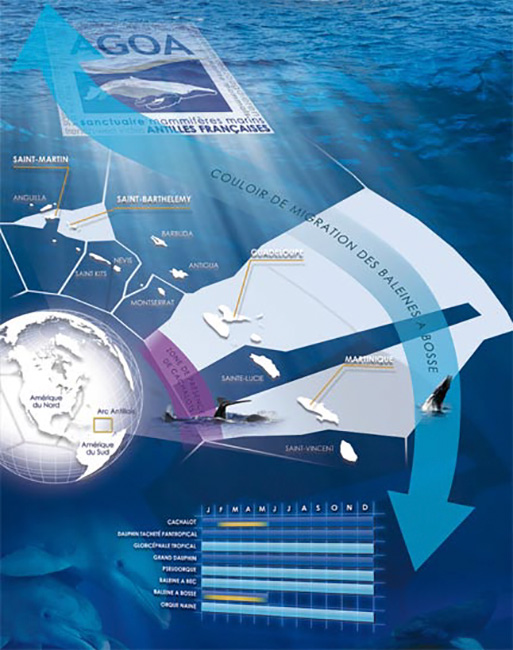
Wilson Celini, originally from Saint Martin, is doing his undergraduate course in Biology, Chemistry and Earth Sciences at the University of Paris Sud 11. He has an internship at the Reserve from April 14th until May 31st, and his assignment is to update the biodiversity database and to develop a research tool for floral and faunal species present in the Reserve, on land and at sea. Basically, he will provide a document that will identify all species present in the Reserve, their common name in English and French, their scientific name and their principal characteristics : endangered, endemic, invasive... Painstaking work that will enable the Reserve to carry out targeted research more easily and therefore be more effective. Knowing that a scientific research assignment identified 818 species in 2012, and that this mission only concerned crustaceans (shrimps, crabs...), mollusks (snails, shells...) and echinoderms (sea urchins, starfish...), the Reserve is fully aware of the magnitude of this task, and without spelling mistakes of course!
The ties between Saint Martin Nature Reserve and Reunion’s Marine Reserve are strong and are being reinforced bit by bit through the compagnonnages between the two structures. At the end of January 2014, Julien Chalifour, Head of Scientific Missions for the Saint Martin Nature Reserve, was welcomed in Reunion Island by Karine Pothin, his counterpart in the Indian Ocean. The objective was for them both to learn from one another through exchange, for example, the scientific monitoring and implementation of protocols. Julien Chalifour had the opportunity to participate in a meeting about the management of a «shark attack», along with other scientists, such as the Ifremer and the University of Reunion and other associations. This issue has troubled Reunion for several years and its management is difficult. Why are there more shark attacks? Is it related to the waste discharged into the sea from the sewage plants and abattoirs? Is it because of the Reserve’s marker buoys that attract fish that in turn attract the sharks? The answer to this last question is negative. On April 20th, Chris Joe and Steeve Ruillet flew to Reunion where they worked for two weeks alongside their Reunion colleagues.
On November 12th, the three Nature Reserve rangers welcomed a new recruit onto their team. Daniel Lewis was employed from the “contrats avenir” program; his application attracted the attention of all the staff at the Reserve. Currently undergoing training and discovery, the new guard is participating in all the sea and land patrols, as well as other jobs such as the maintenance of the anchorages. Extremely motivated by the protection of the environment of his island, he is fully integrated
The floating pool that was originally installed in the Grand-Case Bay was moved in October to the Embouchure Bay (Galion beach), which is part of the Nature Reserve, and has ended in a partnership agreement being drawn up between the Collectivité and the Reserve. The idea is for the Collectivité to have a suitable place for the school swimming activities to be held, and for the Reserve to receive a grant for three years. The Executive Council deliberated over this on September 24th 2013, and has since signed a convention to allocate 150,000 euros to the Nature Reserve spread over three fiscal years, 2013, 2014 and 2015.
The Reserve is moving premises
Due to the new recruits, the Reserve is moving premises, not very far from its former address in Anse Marcel, into a more spacious workspace that is more accessible to the public.
The Nature Reserve’s Advisory Committee last met at the Prefecture on April 26th, 2013. The meeting brought together all parties involved in the management of the protected areas, including the State, the Collectivity, Reserve users, scientists... It was the occasion to draw up an accurate assessment of the Nature Reserve’s projects, thanks to the presentation of the 2012 Report of Activities, and give updates on several important issues (read the following articles). The meeting closed with notes of encouragement to the entire reserve team from Harvé Viotty, the President of the Nature Reserve Management Association, and congratulations from the partners for the quality of work performed.
The Collectivity confirms its commitment
At the same Advisory Committee meeting, the Collectivity confirmed the commitment given by Alain Richardson, the former President of the Collectivity, in October 2012, to contribute up to 50,000 euros to the Nature Reserve’s 2013 budget. This promise made for the first time by an elected official shows the Collectivity’s recognition of the benefits of the Reserve’s actions in Saint-Martin.
On March 29th, two days before Easter, a hectare of dry forest on Pinel Island was reduced to a pile of ashes because of an unauthorized barbecue. The efficient intervention from the firefighters helped to limit the damage, but it is really unfortunate that the anonymous culprit did not comply with the ban on lighting fires in the reserve and did not use the fire points installed by guards on the island. A meeting is planned at the Prefecture between the Firefighters and the Reserve Officers to improve their response capacity in the event of a possible fire. The Reserve will strive to educate the public better about fire risks before Easter, traditionally celebrated with camping on beaches. Plus signboards that clearly indicate the ban against lighting fires will be put up on the Reserve’s beaches. The police have opened an investigation into the exact cause of the fire.
The reorganization within the Nature Reserve was presented to the Advisory Committee members.
After having set up the governing body of Mayotte’s Natural Marine Park and put into place the first management steps of the AGOA Sanctuary to protect marine mammals in the French Antilles, Nicolas Maslach returned, on May 26th, to his position as Conservation Director of the Nature Reserve.
With the regular growth in the strength of its missions, Nicolas Maslach wishes to optimize its actions around four key areas of expertise:
- A Police Division for nature and logistics entrusted to Franck Roncuzzi with the support of the two rangers
- A Regional Cooperation Division and environmental education managed by Romain Renoux.
- A Scientific Division led by Julien Chalifour.
- A Planning and Environmental Engineering Division run by Beatrice Galdi, Project Manager for the Conservatoire du Littoral.
Each division would have the task of optimizing its respective actions and results within the frame of the program defined in the Reserve’s Management Plan.
At the same time a partnership is being set up with the French Marine Protected Areas Agency to create a branch of the AGOA Sanctuary in the Northern Islands, for which representation has be entrusted to Romain Renoux, who will also be responsible for reinforcing CAR-SPAW actions in Saint-Martin.
The Regional Activity Centre implements the protocol signed in 1983 by 37 states and territories relating to zones and to specially protected wildlife in the Caribbean area, from the Gulf of Mexico to the Caribbean Sea.
At the Advisory Committee meeting, Fedmer, a fishermen’s association, brought forward the eventual possibility of bait-and-spinner fishing in the protected waters of the reserve. It was decided to set up a working group for this issue. This group will combine professional fishermen and scientists from the Nature Reserve to study - in the beginning - the methods of implementation of seasonal fishing.
Since returning to the position of Director at the reserve, Nicolas Maslach has been working on the realization of the Nature Reserve’s Head Office, a project included in the Management Plan and submitted for approval to the Advisory Committee members. In order to establish the Headquarters at the Reserve, this ambitious program would entail the creation of a center of expertise for research, environment and ecotourism in Saint-Martin. And through this center, our island would acquire skills and knowledge to innovate ecosystem management, create channels for economic development focused on fishing and aquaculture, and implement environmentrelated training programs: eco tour guides on land and at sea, nature police, marine trades, optimization of eco-tourism projects... It will also be necessary to discuss the tools needed to set up partnerships with research centers and universities throughout the Caribbean. This infrastructure will thus improve the scientific knowledge of our natural environment; promote technological innovation for the protection, conservation and sustainable development of our country.
Even although the Nature Reserve keeps a close watch on Pinel Island; it still remains a highly fragile site.
As it is a very popular spot and relatively near to the coast, it is vulnerable to possible pollution, especially the marine environment.
In order to make an accurate assessment of the seabed around the island, the Nature Reserve gave Aurélien Schmitt the task of mapping out the benthic zones around Pinel, ie: living ground cover on the seabed (coral, sea grass and algae...).
In his second year of Masters for «Expertise and management of the coastal environment» at the Faculty of Brest, he has six months, from March, to fulfill his mission, which is based on three components:
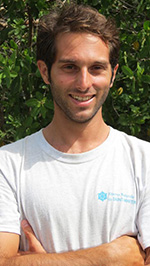
- to create a map of the benthic zones around Pinel
- assess their condition,
- indicate all emblematic species on the map, such as Elkhorn coral Acropora palmata.
At the end of the tourist season, the Reserve rangers drew up a rather
negative report on the state of the moorings installed around Pinel,
Tintamare and Créole Rock, some users are not respecting the limits
of resistance even although it is clearly engraved on the buoys, others
cut through the ends with their propeller or even share moorings with
other boats. Eleven of these moorings have become unusable and
require underwater work to repair them. At Pinel, the weight of five
moorings was doubled from 800kgs to 1.6 tons.
A statistics toolbox for better management
Since the launch of the project PAMPA, the Saint-Martin Nature Reserve has been part of ten pilot sites to have the permission to develop this tool between 2008 and 2011, with the support of the French Initiative for Coral Reefs (Ifrecor).
PAMPA’s main objective was to develop performance indicators of the marine protected areas within the French overseas territories, in order to provide the management bodies with software that would enable them to improve the treatment of all scientific data collected according to their Management Plan.
On December 14th, 2012, Claire Bissery, a biostatistician at the Ifremer in Brest and a permanent follower of the project, came to return the results of this work to the Management Team and Board of Directors.
With the new software, the Reserve is able to account for the progress of various tasks included in its Management Plan.
The Conservatoire du Littoral, whose role is to protect natural sites and coastlines in France by shielding them definitively from construction, also plays a role in Saint Martin, where it owns and protects 355 hectares (almost 880 acres) on the island.
The sites include 14 salt ponds (roughly 200 hectares), natural coastlines (about 85 hectares, comprising all adjoining land that is classified with the nature preserve), and finally the outlying islands (Pinel, Tintamare, Petite Clé, Caye Verte, Rocher Créole, Rocher de l’Anse Marcel and Grand Ilet in the Simpson Bay lagoon). In addition to protecting the land, the Conservatoire also improves these areas, working to conciliate their preservation with public usage: from restitution of deteriorated eco-systems to improvements for the public (botanical paths, observatory, shelters…).
The management of these sites has been entrusted to the Réserve Naturelle, which works hand-in-hand with the Conservatoire.
Working in Saint Martin from July 16-20, 2012, the Conservatoire’s overseas delegate, Marc Duncombe, took a look at all the ongoing dossiers.
Accompanied by Romain Renoux, director of the Réserve and representative of the conservatoire in Saint Martin, and by Béatrice Galdi, responsible for Conservatoire in Saint Martin and Saint Barthélemy, Duncombe first met with prefect Philippe Chopin, who invited him to attend next Conseil des Rivages Français d’Amérique (CRFA), to be held in Saint Martin and Saint Barth in April 2013.
Duncombe also met president Alain Richardson -who, along with Christophe Hénocq, represents the Collectivity at the CRFA- and discussed the challenges of the Conservatoire on the island, including the important issue concerning the expropriation of land with the ruins of a hotel near Galion Beach, with an eye toward rehabilitation of the site. Within the framework of another project, Duncombe met with the president and vice-president of the Association Syndicale Libre of Oyster Pond (ASLOP) and reconfirmed the Conservatoire’s interest in the site at Babit Point, which partially belongs to the ASLOP.
Of great environmental interest, this site houses an important colony of melocactus -or Turk’s Head cactus- a protected species native to the Lesser Antilles.
Duncombe also met with the directors of the two restaurants that have temporary authorization along the coastal area belonging to the Conservatoire on the island of Pinel.
He agreed there were good environmental practices in place for this site for several years now.
Concerning the protection of the salt ponds, Duncombe expressed his concerns about runoff and purification of gray water in relation to the anticipated installation of several water treatment plants whose runoff could impact several of the ponds.
In principal, the Conservatoire is not opposed to such installations, but it needs guarantees about the quality of the water treatment and the maintenance of the installations, so that they do not in any way have a negative effect on the overall health of the ponds. Duncombe also expressed interest in other ongoing projects such as the whale-watching observatory near Coralita, and just a few steps away, the land recently cleaned up at the mouth of the Etang aux Poissons.
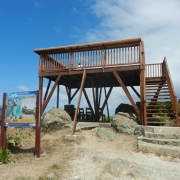 The whale-watching observatory near Coralita © Conservatoire du littoral
The whale-watching observatory near Coralita © Conservatoire du littoralThis is a site where the Conservatoire, in conjunction with the Réserve and the Collectivité, has plans for an environmental restoration project with public access.
Albert Minville, in charge of the land part in the territorial environmental brigade, and Michel Hamlet, in charge of the beaches, are now also littoral rangers as well, are now also littoral rangers as well.
At the suggestion of the Conservatoire du Littoral, these rangers completed commissioning training financed by the Temeum program.
They increased their judicial knowledge in terms of infractions to the environmental code, and have been invested with the same powers as the police.
They were presented with their commissions and their badges by Marc Duncombe, who congratulated them for their success, and their commitment to the protection of the littoral. A cocktail toast for the staff from the territorial direction for the environment; Romain Perreau, head of the sustainable development service at the prefecture; Jean-David Richardson, territorial counselor; and the staff of the Réserve Naturelle and its president followed the informal ceremony.
Julien Chalifour, scientific director of the Réserve, and ranger Christophe Joe are now authorized to band, measure, and handle sea turtles, which are a protected species.
Both men went to Marie Galante for training offered by The National Game and Wildlife Agency (ONCFS) and run by Éric Delcroix, coordinator of the regional sea turtle network in Guadeloupe.
From June 18-21, they participated in three evening outings, between 9pm and 3am, to look for tracks of turtles in egg-laying mode.
They counted and identified the species of each turtle and whether it successfully laid its eggs or returned to the sea.
Each placed two bands on turtles and measured their shells, while procuring a small piece of flesh for DNA analysis.
These actions were taken while the turtles were depositing their eggs, at which time they are almost in a trance-like state.
The bands have a personalized identification number, which allows us to know over time, among other things, if the turtle is faithful to the same spot where it has already been observed, and to monitor its growth.
The Réserve strengthened its professional capacity when chief ranger Franck Roncuzzi obtained his national diploma for rescue-at-sea operations (BNNSA), at the end of threemonth training session, two days per week. Ranger Steeve Ruillet, who already holds this diploma (renewable every five years) took the same training course organized by the prefecture and the National Society For Rescue At Sea (SNSM), to update his knowledge. This diploma authorizes the two rangers to keep an eye on nautical activities at sea as well as zones where people swim, and have the qualifications to offer assistance to a participant on a school trip who needs help.
Two worthy recruits for the management Association of the Réserve
On May 25, 2012, the members of the management association for the Réserve Naturelle de Saint-Martin met in the territorial library in Marigot.
At this time, two high-school teachers, Eunice Augusty Thuleau and Laure Lecurieux, who wanted to become members, were voted in by the other members.
The board of directors was informed that president Alain Richardson and vice-president Ramona Connor has been designated by their peers as representatives of the Collectivité of Saint Martin on the board of the Réserve Naturelle.
The most recent advisory committee of the Réserve Naturelle was held on February 1, 2012.
Presided by prefect Philippe Chopin, the meeting gathered all of parties involved in the management of this protected zone: The French government, the Collectivity, the end-users, the scientists, the CESC, neighborhood councilors and the Marine Park of Sint Maarten.
This was also the occasion to present a detailed report on all of the Réserve Naturelle’s missions and a recap of all activities in 2011.
There are two important points to remember: the first concerns the fights against the lionfish and the creation of a working group dedicated to battle against this invasive species (see related article on page 10); and the second point relates to Galion Bay and the creation of a committee comprising the Réserve, the French government, the Collectivity and end-users in order to better govern the various activities taking place at this site, where kite-surfing is sometimes practiced at the site in spite of the prefectural interdiction (see article on page 14).
At the request of the prefect, a second advisory committee meeting will be held each year in September or October.

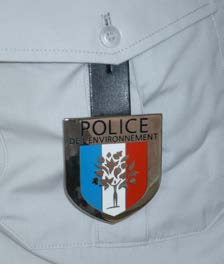
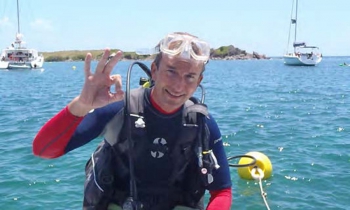
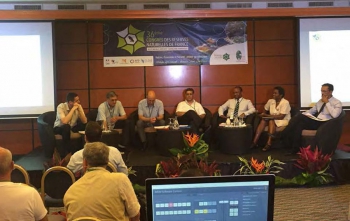
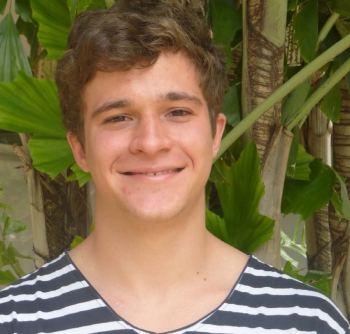

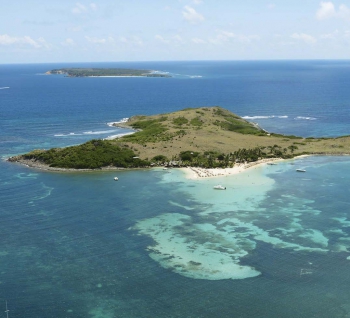
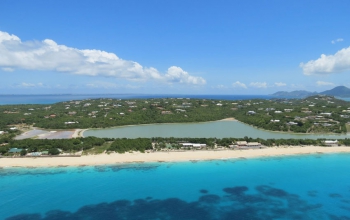
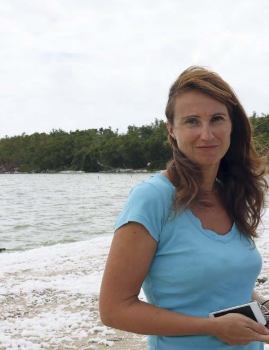
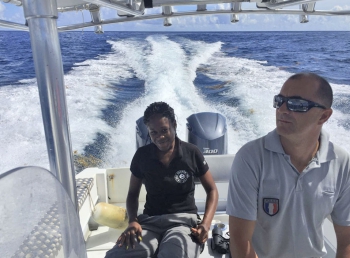


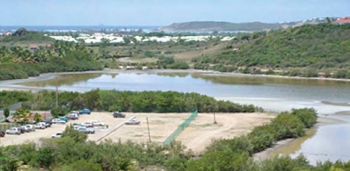
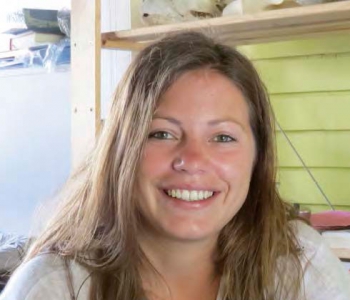
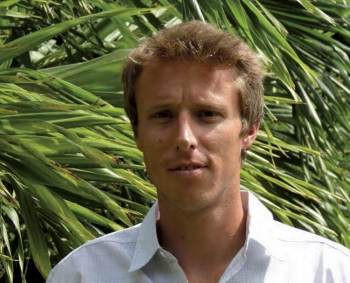
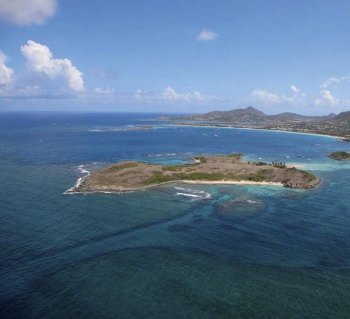
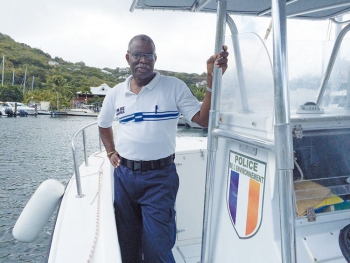
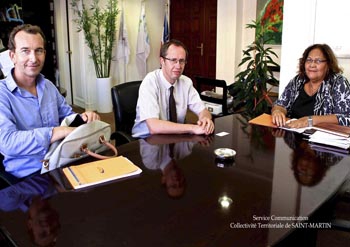
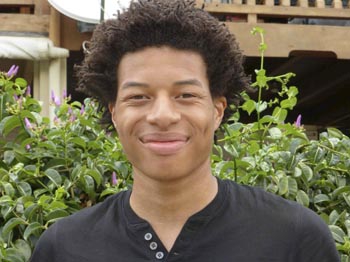

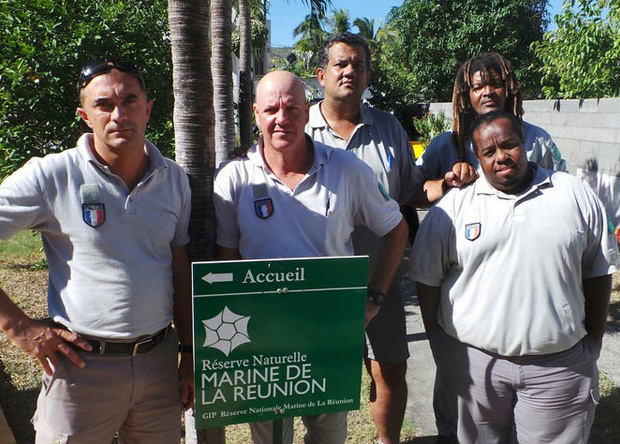
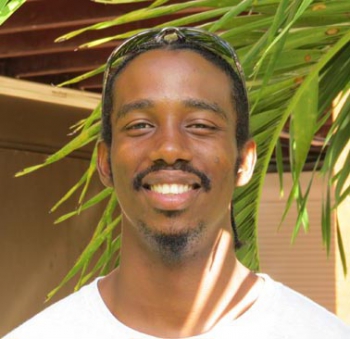
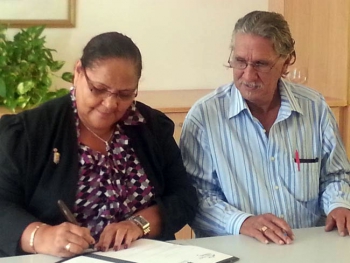
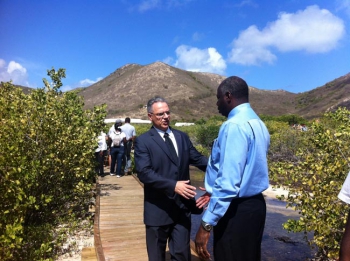
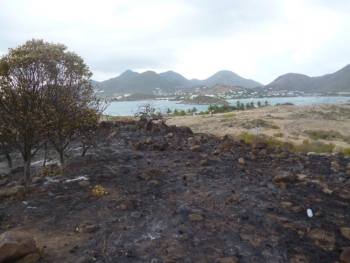
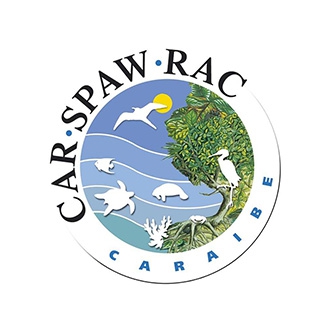
![By MichaelMaggs (Own work) [CC-BY-SA-3.0 (http://creativecommons.org/licenses/by-sa/3.0)], via Wikimedia Commons](https://reservenaturelle-saint-martin.com/sites/default/files/styles/scale_350x350/public/field/portfolio/640px-green_highlander_salmon_fly.jpg?itok=ITOcekGS)
